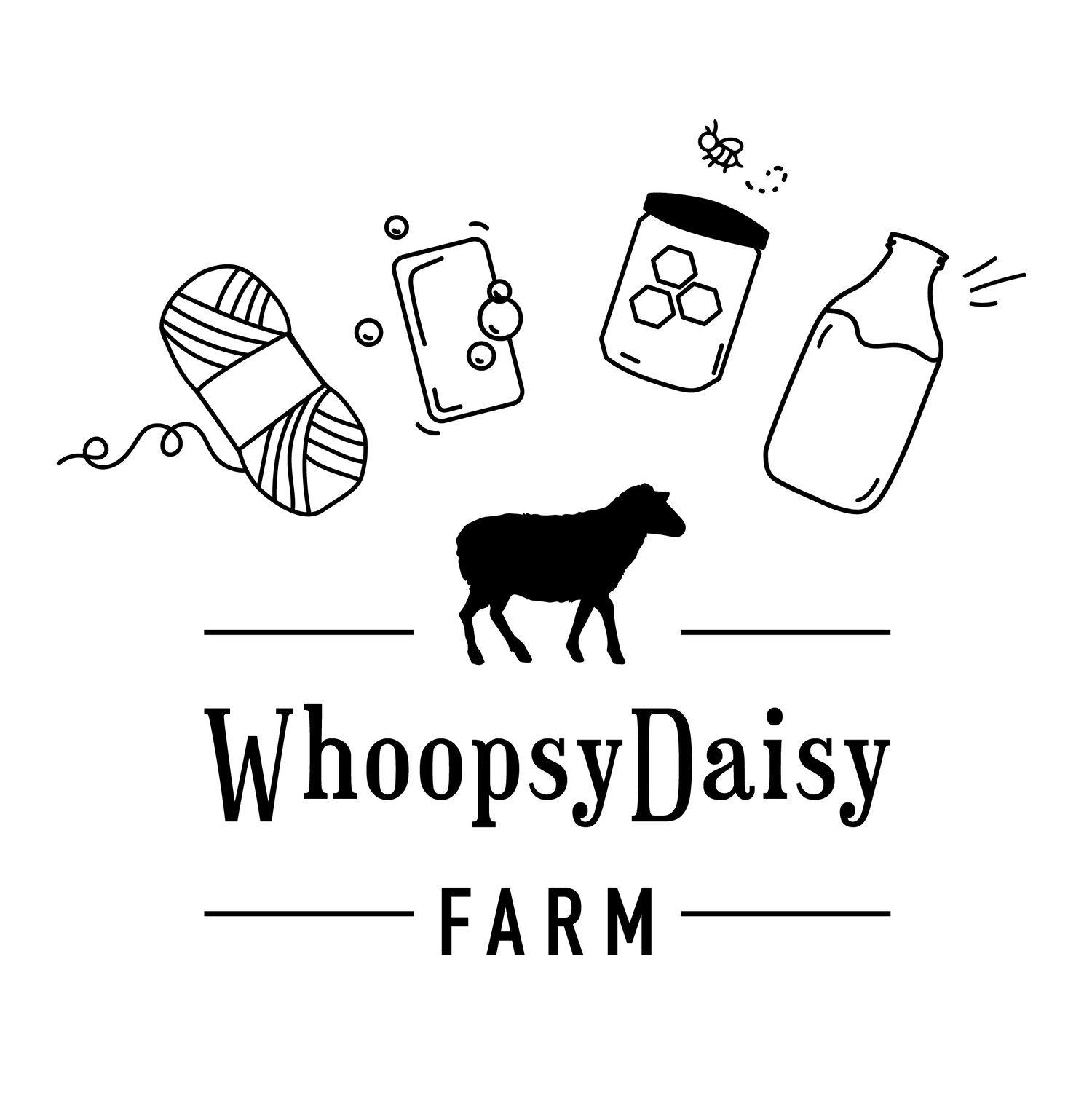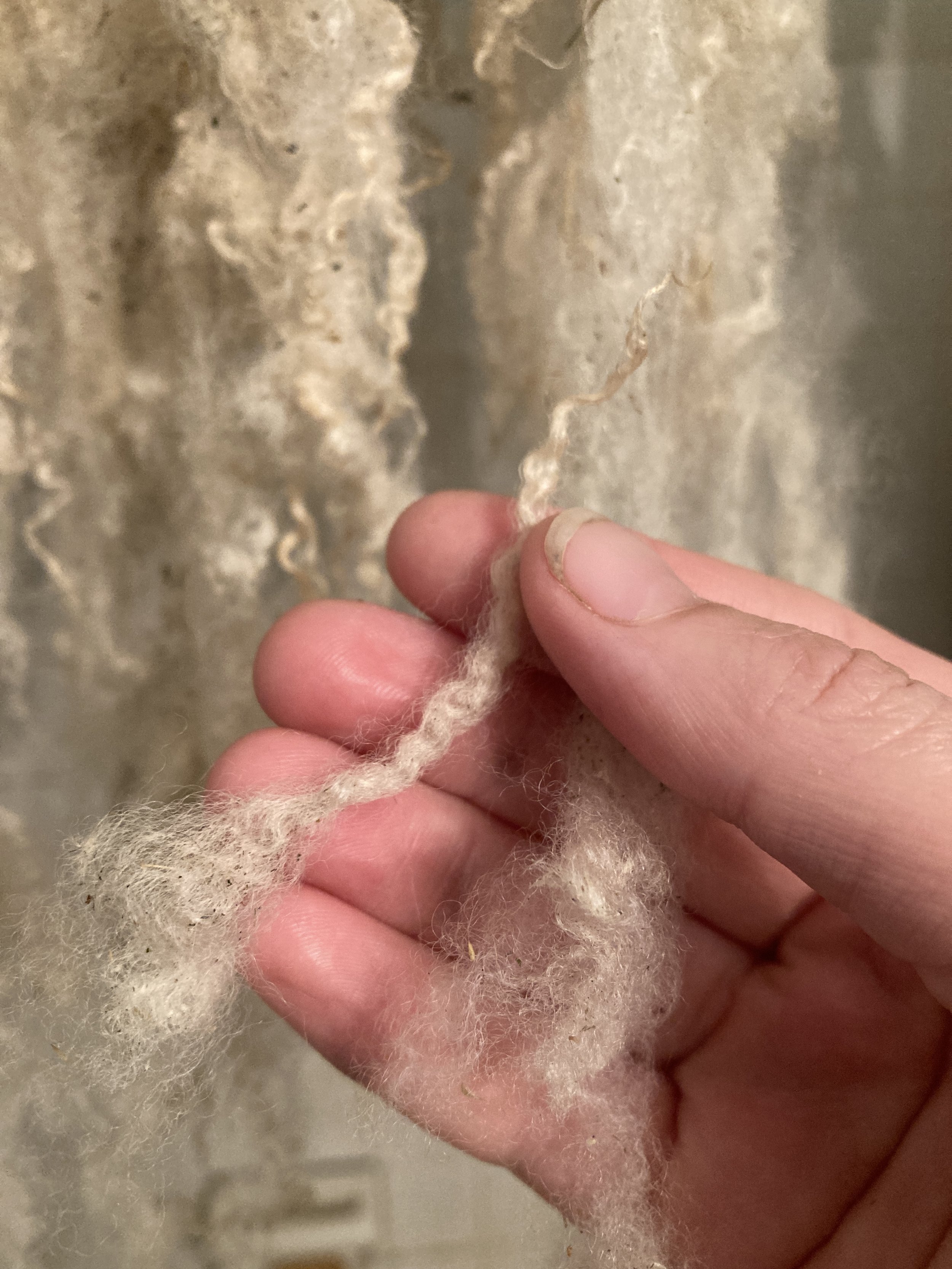For the love of wool 3 ‘Its too scratchy’
I vividly remember finding a lovely cardigan at goodwill that was 100% wool. As I paid for it, the cashier commented ‘Wow. That’s 100% wool. I’m shocked because, you know, wool is typically SO SCRATCHY.’
The poor lady was probably incredibly relieved for me to take my bags and leave after the lecture I gave her in wool breed, processing, and garment types. Well that will teach her to make an offhand comment steeped in ignorance about my beloved wool!
She was less than interested, but you dear reader clearly are, so I shall vent my wool passion on you.
This 100% merino wool cardigan is wearable almost all year long. It doesn’t match the hat at all which is also wool and incredibly warm and comfortable
Some wool is very ‘scratchy,’ other types of wool are incredibly soft. Merino wool is the current industry standard for soft wool. Even then, sub-breeds of Merino, nutrition of the sheep, and the shepherds care of the fleece while it is growing can effect the softness of the individual fleeces. Merino’s were bred to have incredibly soft fleeces by the Spanish royalty. Rambouillet sheep are the ‘French Version’ of Merinos and have very comparable wool types.
Contrast this to, say, an Awassi sheep - a popular dairy sheep breed on the global market - and anyone will tell you ‘Its just rug wool.’ I’ve even heard East Friesan wool described as rug wool, which is sad because some of my most favorite socks were knit from an East Friesan fleece.
I read in a book on fleece types that it is a disservice to wool to describe it in terms of ‘scratchiness.’ Rather, we should describe it in terms of ‘strength’ or even ‘crunchiness’ if we must. I love the mental image of crunchiness in fleece, as my ewe Sally has a fleece with gorgeous coloring and the most impressive ‘crunch’ I’ve seen in a fleece. Her wool ought never to be used for a scarf, or baby clothes, or something for a sensitive-skinned person. However, when paired with a cheviot fleece for example, it makes work gloves that last longer than Carhart winter gloves do. It makes amazing blankets and rugs when spun short and by itself, and when I shear her once a year and allow her undercoat (she is dual coated so has tog and thel) to grow out, her wool makes a delightful Lopi style yarn that I have great plans to make a 100% wool winter coat out of.
crimp from a Border Leicester fleece. While not the softest wool, it is lovely for skirts our outerwear cardigans or woven textiles.
Different sheep breeds were selectively bred for different uses in mind. The Awassi sheep was mainly bred in arid conditions, so the local folks weren’t much concerned with soft baby clothes and fashionable scarves for their long winters. They needed tents, ropes, belts, woven blankets, etc. They probably wore mainly felted garments made of wool, not spun and woven or knit up. And if they did want such garments, a little scratchiness didn’t bother them as the entire environment was rather prickly and scratchy.
The Bluefaced Leicester sheep, conversely, has a long staple length for garment strength but a far softer fiber for more comfortable clothes for the British middle class who wore wool almost all year long on their beautiful damp, rather cool, island.
Some breeds just developed out of necessity, such as the much-beloved Shetland sheep or the Gulf Coast Native. These sheep were selectively bred by Providence to have certain characteristics in their fleeces that will break wool mill equipment but serve the needs of the sheep quite well in terms of surviving their natural environments.
Both breeds have irregular fleeces that change depending on the spot on their bodies the wool grows. The fleeces are incredibly breathable and light, but will trap heat and block moisture when needed.
A Longwool breed of yarn is amazing for knitting lace patterns. Since it is a stronger fleece it doesn’t felt as easily and so shows the crispness of the pattern for longer
All wool has breathable properties, but not all wool has the same textural properties. An Icelandic wool will feel prickly when worn in warmer temperatures, but I have noticed when I wear my Icelandic-wool garments in extreme cold, the prickliness fades in noticeability because of the extreme WARMTH the prickliness somehow creates. Conversely, my 100% merino hats, gloves and sweaters are incredibly SOFT but do not trap the same amount of warmth as the pricklier breeds do. This would make some sense if you consider that Spain is a far more warmer climate than Iceland, where the two breeds in comparison were created. Now that our stash of woolen wear has grown, I have discovered that I will reach for a particular breed for certain conditions. I will wear my merino cardigans, scarves and shawls up until late May or even June in Kentucky, and start again in early October. However my Icelandic wear is solely reserved for actual WINTER, or when I know I will be out working for hours on some kind of farm-work (the Icelandic gloves being the exception. They are just wonderful most of the year except the height of summer)
Our Perkins-line Gulf Coast Native fleeces are incredibly soft and squishy - as you can see by my rubbing it all over my face!
Yes I wear wool even when temperatures begin to be warmer around here. I have found that insulation doesn’t always mean heat, it can mean homeostasis. Insulating ourselves means that our internal thermostat can keep things consistent and not have to work so hard on cooling down or warming up. This is especially useful on days when I have worked hard outside on the farm, come in, shower, make myself presentable, and then go inside someplace with a very strong air conditioner. The breathable Merino wool is invaluable in these circumstances as my body has acclimated to the heat outside and isn’t sure what to do with the arctic blast of AC that southerners believe is a necessity as soon as the temperatures hit 75 degrees outside.
So what am I saying - I am saying breed makes a big difference in the scratchiness factor of the wool.
Another large factor in wool’s scratchiness is how that wool was processed. Icelandic wool has been maligned as ‘not very good quality’ or ‘only good for certain things.’ Because for some reason, Lanolin - the ‘hair grease’ sheep produce naturally - has been touted as something that MUST always be washed out 100%. Now in some breeds who produce an amazing amount of lanolin, yes you want to wash out most of it. And you really must wash all that lanolin out if you want to dye your wool, as it is a wax and will keep the dye from attaching to the wool fibers. However, a wool mill in Iceland (visit their online store HERE) has developed a yarn line that is 100% Icelandic AND naturally colored. In this way, they are able to wash the wool in such a way as to keep hold of some of the lanolin in the fibers and therefore create a much softer end product. I have also noticed this when I wash Sally’s wool - her fleece is far less barilla-pad-ish when I was it in cooler temperatures with less soap and therefore leave quite a bit of lanolin in it. This also adds to the desirability of it for something say a winter coat, as the lanolin will act to waterproof the garment.
Showing off some hand-spun Gulf Coast Native yarn
Some wools simply do not thrive in Wool Mill settings. My Gulf Coast Native sheep produce a wool that really requires some homework on the part of the wool mill owner. It must be washed more slowly and gently, the fibers will break easily so the carders must be put on lower settings, and the twist ought not to be too strong. However if you hop over to spinning groups on Facebook and mention Gulf Coast Native fleece, most will exuberantly say they wish it was not such a rare bred as the fleeces are a delight.
Washing Gulf Coast Native fleece in rainwater and air drying in a tree leaves lanolin in the fiber for a lower processed yarn
Longwool fleece wants to be combed, not carded. Not all fleeces want to be scoured, they just want washed. Some fleeces do better as felt or woven products, not knit or crocheted. There are hundreds of sheep breeds in the world, and they were all developed with very specific uses and in certain climates. Wool is not plastic or generic or uniform - it is a living substance with nuances and specific needs. Instead of ignorantly dismissing it, we as a culture really ought to develop a lot more curiosity about it as a viable source of clothing and providing for our families. But to do so, we must be willing to admit that as a culture we have been wrong about it for a long time. We must be willing to educate ourselves about it intellectually. And we must embrace learning new skills which take time away from Netflix or Facebook and require us to actually be present, in the moment, doing wholesome things.






